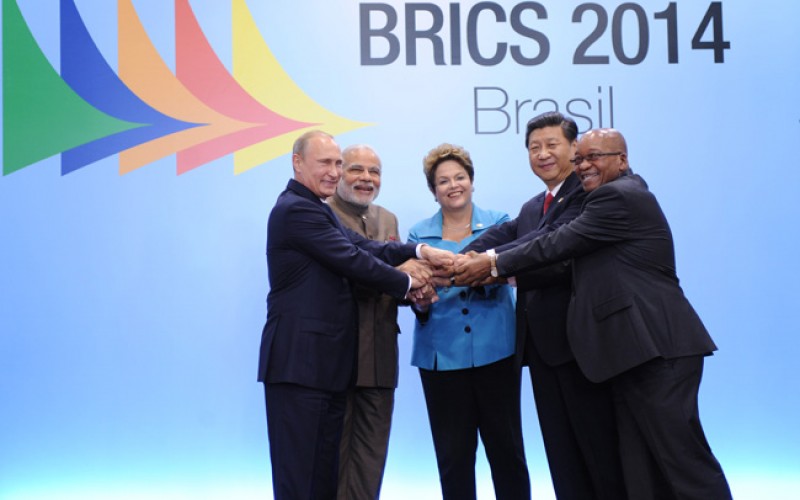Following the recent move by Goldman Sachs in closing its BRICS fund, the future of this economic A-team seems uncertain. What does the future hold for the BRICS? And can we still expect a credible alternative to the Western-created IMF and World Bank to emerge?

Face: [the team’s plane is starting to malfunction] Uh, Murdock, what’s going to happen?
Murdock: Looks like we’re going to crash.’
Face: No, what’s *really* going to happen?
Murdock: Looks like we’re going to crash and die.
Could we be seeing a similar script unfolding for the international economic A-team? Well, according to Goldman Sachs, yes.
It comes as little surprise to some institutional investors that Goldman decided to pull the plug on their depreciating investment product.
Assets under management have dwindled to approximately $100 million, from a peak of $800 million at the end of 2010. However, it does seem ironic that the institution that first gave life to the idea of the BRICs (later turned BRICS to accommodate South Africa) has now decided to kill its own creation.
But in the game of international finance economic, Darwinism is the name of the game.
BRICS who?
In 2001 Lord Jim O’Neill, the then chief economist at Goldman Sachs, noted that the real GDP among Brazil, Russia, India, and China had surpassed that of the G7 group of mature economies.
This informal association of nations, he stated, were the “strategic pillars” of a supposedly entirely new international system. And thus voilà! A new investment angle opened up to the world.
This awkward arranged marriage served as a powerful inspiration not only for investors who rushed to place their bets on big emerging markets, but also for political scientists and academics who sought to understand how this new goliath will operate as a political entity. They were not disappointed.
Brazil, Russia, India, and China make up half the world population, one-fifth of the world’s GDP, and one-quarter of the world’s land mass, so yes, a force to be reckoned with it is.
In 2006 this partnership was solidified following a series of meetings on the side-lines of a UN General Assembly summit in New York.
South Africa joined the party in 2010 following a political move to include an African nation as the group couldn’t possibly represent the idea of emerging economies without an African representative.
Nigeria and South Africa were shortlisted with South Africa winning out as it fit the acronym.
A dysfunctional union
While it can be agreed that the BRICS represent a growing potential for economic world development, one cannot divorce economic and political ambitions. The individual political ambitions between the BRICS are highly divergent.
India, for example, openly states its close political and defence partnership with the US, with Prime Minister Modi calling the US a “natural ally.”
China and Russia on the other hand don’t share similar convictions and some say use the bloc as a platform for political concessions against the West.
Russia and Brazil share concerns regarding US phone tapping and the NSA. However, in a famous incident in November 2012, Rousseff actually cut a trip short to Mosco when it became clear that Putin had no intention of addressing with any seriousness Brazilian issues related to wiretapping.
The BRICS’ short history is littered with many other similar examples of unallied strategic and political interests which is why there is challenge to the credibility of such a union.
New development bank
Being as the BRICS are commodity-driven economies, it is no wonder why investments are dwindling. On the whole, commodities are experiencing a bearish climate, not good for the new boys on the block.
However, one field which has seen somewhat successful strides is the establishment of the New Development Bank, the Darth Vader to the West’s Luke Skywalker duo represented by the IMF and World Bank.
With its $50 billion initial capital investment, it is pegged to be a credible alternative financial vehicle, seeking to afford an alternative to the dollar-dominated Western establishment.
The President of Brazil, Dilma Rouseff, said recently that BRICS countries “are among the largest in the world and cannot content themselves in the middle of the 21st century with any kind of dependency.”
The West has taken note and is feeling the pressure; if the NDB is successful it will see a dilution of the dollar as the world’s reserve currency, which will compromise US hegemony.
Curbing their enthusiasm
Being as China is the undisputed leader of the BRICS, it holds much sway over economic policy.
If the West must target anyone it is the Chinese. A tall order perhaps, China has grown in confidence over the last few decades and, along with the NDB, is also working on developing the Asian Infrastructure Investment Bank (AIIB).
They are no strangers to Western flirtations and poaching. That has not stooped the likes of the IMF from curbing their enthusiasm.
The last few weeks have seen a debate growing within the IMF establishment as to whether the IMF will include the yuan in the basket of currencies that make up their reserves.
Momentarily the IMF holds four major currencies as reserves: the US dollar, euro, pound, and yen, with the 40% of reserves held in dollars.
If the yuan is included as a reserve currency this may just allow the Chinese to rethink their plans for economic independence. At least that’s what is hoped.
The future however remains unpredictable. Although Goldman pulled their funding, this does not mean their confidence in emerging markets has also dwindled.
This move by the financial institution may mean a short-term drop in confidence in the BRICS, but not a complete lack of faith in emerging economies.
Even if we see disbanding in the BRICS brand, this economic adventure will serve as an exercise of confidence for the rising nations and a marker of their importance. You never lose in international affairs; you win some or learn some.
sourche: http://globalriskinsights.com/2015/11/are-the-brics-crumbling/
Δεν υπάρχουν σχόλια:
Δημοσίευση σχολίου